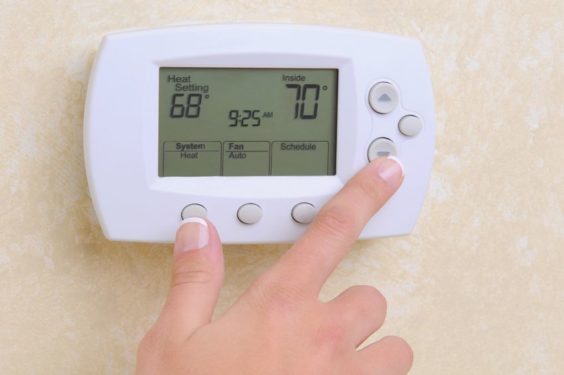You’ve probably heard the question before: “Does turning down the thermostat save money?” And, you’ve probably heard both sides of the argument. Some will say that this method does in fact save money on your energy bill. Others will say that this method does not save money but actually causes the furnace to run even more!
Well, which opinion is correct? Does turning down the thermostat save money?
Turning Down the Thermostat Does Save Money
…if done properly. That’s the key! There are certain requirements that make lowering the thermostat an effective option for saving money. Oh yeah, just some FYI: Lowering the temperature for set periods of time is referred to as a “setback”.
First of all, it’s recommended that the thermostat is lowered for a continual period of at least 8 hours. So, if the home or business is going to be vacant for a period of 8 hours or more, turning down the thermostat can definitely be helpful in saving money. You can also turn the thermostat down at night for an 8+ hour period while everyone is sleeping. Just remember that it will be much colder in the home while sleeping, so be prepared for that.
Secondly, it’s best to turn down the heat to anywhere between 8-15 degrees below the normal comfortable level for that 8+ hour period. For example, if the thermostat is typically set to 70 degrees when people are there, then lowering it to 55-62 degrees when people are away (or sleeping) can save you money.
There’s Another Option
Rather than turning down the heat at an extreme level for a long period of time, you can also turn down the heat at a moderate level, permanently. For example, if the thermostat is normally set at 72 degrees, lowering your “normal set temperature” a few degrees will lower your energy bill. Each degree that the thermostat is lowered can result in a savings of 1%-3% on your energy bill. Remember, this is for the constant set temperature, not a temperature that you set the thermostat to for periods of time (setbacks).
Why Not Do Both?
You actually can use both of these ideas and get ultimate savings! To do this, it’s recommended that the thermostat is set to 68 degrees for the normal set temperature. Then, for the periods of 8 hours or more when you want to do the setbacks, lower the thermostat by 8-15 degrees. I understand that 68 degrees might be too cold for some people when it comes to a “comfortable set temperature”, so adjust accordingly. If you normally keep the temperature at 72 degrees and 68 is too cold, try setting the temperature to 70 degrees and perform the 8-15 degree setbacks from there.

How Much Does Turning Down the Thermostat Save?
Let’s get into some numbers that can be expected by performing these money saving tricks.
The Department of Energy estimates that if you perform setbacks for at least 8 hours, you can expect a 1% savings per 1 degree that the thermostat is lowered. So if the temperature is set back by 10 degrees during 8+ hour periods on a regular basis, savings of up to 10% can be expected annually.
When it comes to lowering the temperature permanently, a savings of 1-3% per 1 degree can be expected. For example, if your continual set temperature is lowered by 3 degrees, a savings of about 3-9% can be expected. And if both of these methods are used, even more savings can result!
Related: Turn AC Off When Not Home: Good Idea?
Try Turning Down the Thermostat for Yourself
At Cagle Service Heating and Air, we recommend trying these money saving methods out for yourself. Experiment with both methods and decide which ones work for you while weighing savings and comfort.
One more thing: A programmable thermostat is also something to look into if you are going to be doing setbacks. A programmable thermostat allows you to set schedules for your heating cycles and temperatures. This way, you don’t have to adjust the temperature yourself every time you want to perform a setback. The thermostat will do it automatically at the prescribed time.



